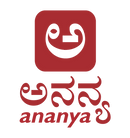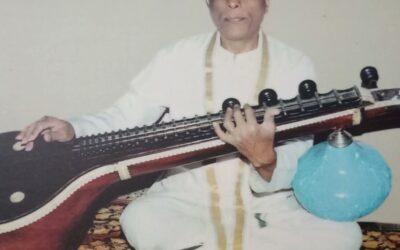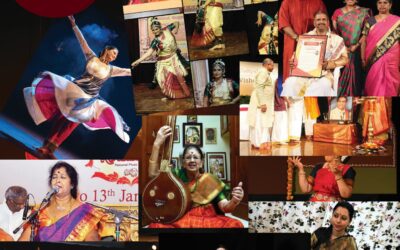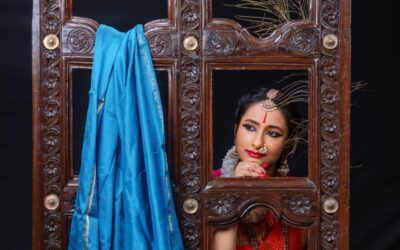Chapter 2 (Continued)
The Sanketi origin
Ranjani Govind
Photos by Rudrapatnam S. Ramakanth
The Mysore link…..
The reason for music being integral to everyone then was the presence of the Royal Court in Mysore as a great patron of fine arts. As the rulers themselves were strongly associated with music, their impetus to musicians was in the form of honouring them during the Dasara Darbar; by appointing Asthana Vidwans (court musicians); by opening a Royal School of Music in the Palace; introducing music as a subject in schools; and exchanging Vidwans from several other royal courts for performances. It was during the last 75 years of the Royal rule (the last quarter of the 19th Century to the first half of the 20th Century) that the best of Sanketi musicians came to limelight with the Royals recognizing their talent.
In the diaspora, consequent to modern education and subsequently India’s Independence, the bulk of the community living in rural Karnataka left for cities and took to other professions and gradually emerged as doctors, engineers, lawyers, educationists, administrators, industrialists… the NASA in U.S.A., being the proof (North American Sanketi Association!)
Sanketi village – Mattur where Sanskrit is spoken
The main pockets where Sanketis devoted to music lived, was however, Rudrapatna in Hassan district and Chilkunda in Hunsur taluk of Mysore district. Another notable Sanketi village is the all-Sanskrit speaking Mattur, eight kilometres from Shimoga, on the Tirthahalli route. Agriculturists wielding field tools, dressed in panche (dhoti) and mel-vastra (towel for the chest), can be seen here conversing in lyrical Sanskrit! Amidst their work in the green fields they recite the Vedas. Every kitchen has words like urika, dharmi, chalani, challi echoing.As the crimson red of the sunset lends a sensuous flow to the Tunga river, groups reciting their evening shlokas can be vividly heard, as they come together for their routine sandhyavandana. This is Mattur, along with its sibling Hosahalli that has together set an example that Sanskrit can be made use of as an outstanding spoken language.
History has it that Mattur was Krishnarajapuram during the rule of the Vijayanagar kings. The village was washed away by the agony of the Tunga once, but when the people re-built the township, it was re-named ‘Matturu’ (once again it’s our village).
Books on Mattur reveal that the Brahmins from Kerala border came there when the Mysore Royals requested the Travancore Maharajas to have them sent for help in their sacred rituals. Since the holy men in turn requested the Mysore Maharajas to help them continue their livelihood on the banks of these rivers (where they could practice agriculture), villages surrounding the Tunga, Cauvery and Hemavathi were exposed to them even as the new occupants brought coconut, areca nut and banana into their surroundings.But it was in 1522 when King Achyutharaya Krishnaraya from Anegundi was enjoying the sunset on the banks of the Tunga that he happened to hear the soothing Vedas wafting across. He was magnetically drawn towards the mellow rendering by a group of villagers. The incident proved to be a turning point.
On the insistence of the Maharaja, Minister Trayambakaraya tirelessly visited the villages and convinced the residents to accept the offer of this village for themselves. That was when Mattur was officially given away to these inhabitants, recognizing its ‘obsession for Sanskrit’ and for the passion behind this rural community fostering a healthy cultural pursuit. This copper inscription remains even today at the Shimoga Kendra Vastu Sangrahalaya.
In 1982, when resident Sagar Ramachandra Bhat was felicitated for completely adapting to an ‘all-Sanskrit-converse’ for 60 years, the Pejawar Math Swamiji, Vishwesha Thirtha, who was present there, had declared “Yeshaha Gramaha Samskruta gramaha Bhavatu” – Mattur will henceforth be our future Sanskrit village. Mattur Krishnamurthy (who was also the Director of Bharatiya Vidya Bhavan (Bangalore and London) and a Padma Shri awardee) belonged to this village.
A sizeable number of Sanketis now live in the U.S. and U.K. with an overall figure of less than 5-lakh spread around the world. The community is now working on a family tree project to develop an evolving record of their development. There exists an active Sanketi Sangha now in India and a Sanketi Academy that looks into the culture, tradition, language and research for its preservation.

Mahamahopadyaya Dr.Rudrapatna Shyamasastry 1868-1944
Gathering the brood that makes up the family pride……
The palpable factor about Sanketis is the vast number of musicians and composers. It is indeed a paradox that in spite of the vast volume of performers and vaggeyakaras (composers) contributing to the expansion and progress of the Carnatic genre in the last Century, Sanketi, as a community, has failed to be immediately recognized as a ‘society of musicians’ in the larger music circles in India, besides Karnataka. Though the list of Sanketi musicians is long and serpentine, a sizeable lot have made a huge mark, though they have failed to gain the ‘celebrity’ status.
* The 19th Century and the first half of the 20th Century brought in Sanketi musicians in several hundreds. Veena Naranappa, the maternal grandfather of R.K. Srikantan was a native of Bettadapura. As a vainika (veena player) and vocalist, his music was termed ‘Gandharva Gana’ (celestial music). It is said that Veena Seshanna would be pleaded by his sister to follow Naranappa’s styling! And to speak of his architectural design sense, he was the first in Bettadapura to build a two-storeyed house, which came to be referred to as the ‘Mahadi Mane!’
* Kallikote Shyama Shastri, paternal uncle of R.K. Srikantan was a harikatha and violin expert who went on to become a Kannada Vidwan and was known for his ‘Kavya Vachana’ (poetic) discourses.
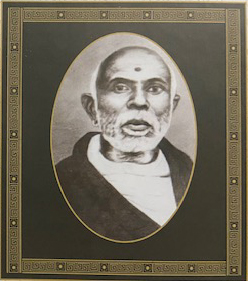
Panditaraja Rudrapatna Krishna Sastry 1877-1946
* Krishna Sastry (father of R.K.Srikantan) the younger brother of Rudrapatnam Shyama Sastry, was a Sanskrit and Kannada Pandit. Influenced by his father-in-law Veena Naranappa, he learnt music and had a command on Puranas (scriptures) that helped him in his proficient Harikatha discourses. Being a good painter, he even worked as a drawing master for sometime. Flautist A.K. Subba Rao was his disciple.
Krishna Sastry was blessed to have all his sons taking forward the family musical legacy, as all the four have made a name in Classical Carnatic music. The eldest R.K. Venkatrama Sastry was a student of Mysore T. Chowdiah and was a staff artiste of the Madras-station of the All India Radio. He accompanied several top-rung musicians in his era, including M.S. Subbulakshmi. His grandson R.K. Sriramkumar is a busy violinist of repute today.
The second, R.K. Narayanaswamy learnt from Musiri Subramanya Iyer, and all his children – R.N. Tyagarajan & R.N. Taranath (Rudrapatnam Brothers) and R.N. Srilatha – are prominent vocalists of Karnataka. R.N. Tyagarajan was also the Asst. Director of Doordarshan, Chennai and Srilatha has the distinction of being the first lady musician in the State to earn a Doctoral Degree in Music from the University of Mysore, and is now on the faculty of music in the Fine Arts College of Mysore.
The third, R.K. Ramanathan, an English professor, was also a performing musician while the fourth, vocalist R.K. Srikantan (the most prominent of the four) went on to bag the Padma Bhushan in 2010 (when he touched 90) for his services to the Carnatic genre. Srikantan, the ‘Rajya Sangeetha Vidwan’ of Karnataka (Conferred by the Government in 1994) is a Kannada and English expert too, his lecture-demonstrations in Kannada and English bring out the erudite scholar and teacher in him. Srikantan’s son Ramakanth is a well-known vocalist and daughter Ratnamala Prakash is a renowned Sugam Sangeet artiste.
Ramakanth worked as a full-time lecturer in Biology in a college in Bangalore, and retired as a Professor. Known for his deft drawing skills, he is a noted wild-life photographer who has won national and international laurels.
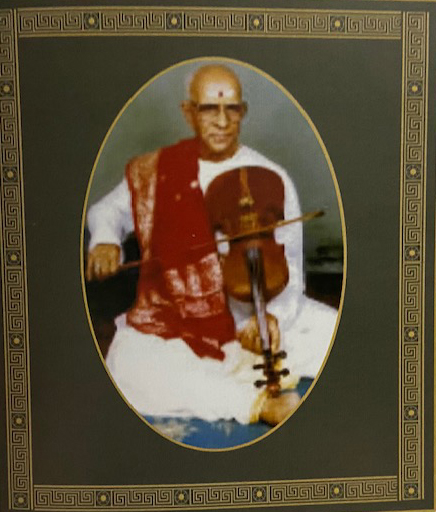
Vidwan R R Keshava Murthy 1914-2006
Other Sanketi scholars…
* N. Channakeshavaiah of Mandya district was a student of Mysore Vasudevacharya who became an Asthana Vidwan of Mysore Royal Court in 1944. With several books to his credit, he was on the Experts Committee of the Madras Music Academy for two decades, contributing articles to the Academy’s journal and was the member of the AIR Audition Board and the Music Examination Board.
* C. Rangaiah of Chilkunda village in Mysore district was a student of Veena Venkatagiriappa and Mysore Vasudevacharya. This prolific composer has 500 Kritis to his credit and also has kritis in the 72 melakarta ragas. His books on the theory of music were a big draw.
* B. Subba Rao of Basavapatna of Hassan District was trained under Vishwanatha Sastry of the Shisya parampara of Maha Viadyanatha Iyer. Adept at veena, violin and gotuvadya, he retired as the Deputy Director, Agriculture Department, Madhya Pradesh. While in Nagpur he learnt Hindustani under Vinayak Rao Patvardhan and brought out the notable four-volume ‘Raga-Nidhi’ explaining ragas of both the classical systems.
* R.R. Keshavamurthy, son of Rudrapatnam Ramaswamaiah took training under stalwarts as Bidaram Krishnappa in Mysore. Moving to Bangalore in 1934, he rose to fame from then and accompanied several stalwarts, his proficiency being his own creation, a seven-stringed violin. He is the founder-member of Karnataka Ganakala Parishat.
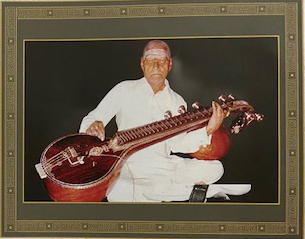
Vidwan-Rudrapatna-S-Keshava-Murthy-1903-1982.
* R.S. Keshavamurthy of Rudrapatna comes from a family of Vainikas. His advanced training under Veena Bhakshi Subbanna helped him reach the Asthana Vidwan pedestal at the Mysore court. Even before he entered his teens, he could set the frets and make a Veena, and in 1924 he perfected a 24-stringed Gayatri Veena that he used for opening the concerts at Seetharama Mandira in Mysore, built by Bidaram Krishnappa in 1929. He used to be conversant with instruments such as Balakokila (with 350 strings); Jaltarang; violin; flute and the piano. Most among his 11 children took to music. R.K. Srinivasamurthy, R.K. Suryanarayana, R.K. Raghavan, R.K. Padmanabha and R.K. Prakash are vainikas, while R.K. Prasanna Kumar is a mridangist, R.K. Chandrashekar a violinist.
* Prof R.N. Doreswamy, a native of Rudrapatna, was the son of Nala Venkataramaiah, a headmaster in Basavapatna. After he received advanced training from Salem Doraiswamy Iyengar and Veena Venkatagiriappa, he became the Asthana Vidwan of Mysore Court in 1947. When the Fine Arts College of the Mysore University opened in 1965, Doreswamy was appointed the Head of the Dept of Music. At the instance of the then Vice-Chancellor, K.V. Puttappa, the Jnanapith Laureate, he brought out a book containing 66 compositions. His kritis have something rare in their flow, as his lyrics are a commentary on social and musical atmosphere of his period.
* M.R. Shankaramurthy of Maddalapura in Hassan District had his initial training under Ramabhatta, the bhajane meshtru at Mattur Ramamandira. Continuing his lessons under R.R. Keshavamurthy, he realized that there is a need for text-books on music. He authored and published 40 books in the Karnataka Sangeeta Tarangini series.
* Veena Venkataramaiah’s immortal Taanavarna ‘Viriboni’ in Kedaragowla raga – Jhampe tala and another in raga Nayaki are renowned master pieces in the Carnatic genre.
* R.K. Suryanarayana has 400 compositions in languages as Sanskrit, Kannada, Telugu, Manipravala and Hindi to his credit. He was one of the foremost in composing a kriti on Guru Raghavendra, which he presented in Kaula Lampur in 1970. After his 24 kritis on Gururaya, he was made the Asthana Vidwan of Mantralaya Mutt in 1982 in recognition of his services. Raghavendra Swamiji himself was a Vainika, and his great grandfather Veena Krishna Bhatta was a court musician of the Vijayanagar Empire. Apart from Suryanarayana’s 72 Janakaraga Krithirathnamala, the rare subjects he has included for his compositions include one on Yama, the Lord of Death, in Mukhari.
* Vocalist Ganakalabhushana, R.K.Padmanabha, born to a purohit in Rudrapatna would be wrapped up in eight-nine hours of rigorous exercises under Prof. H.V. Krishnamurthy during his advanced guidance in Bangalore. RKP runs music classes at his Sharada Kala Kendra, conducts residential gurukula camps for youngsters and his lecture-demonstrations with special sessions on the Haridasas are considered veritable textbooks for aspiring musicians. His adoration for Haridasa Vaadiraja (contemporary of Purandaradasa) saw him build the “Vaadiraja Kala Bhavana” near Hulimaavu and has 80 compositions to his credit; he has even tuned 100 kritis of Vadiraja, way back in the 1990.
Sanketi ‘stories’ in melody…….
* The collector of Dharwad (Part of the then Bombay Presidency) a British Officer was so mesmerized by Veena Naranappa’s mellifluous voice that on his visit to Rudrapatna he literally managed to pull him away to Dharwad to hear him ‘at his will.’
* The Mysore Maharaja, Chamaraja Wadiyar, was once on his way to the Vanhi Pushkarani attached to the Ramanathapura Rameshwara temple. As he heard the strains of some mesmerizing music from one of the gardens there, he sent word for the musician to see him. It was Thotti Thamappa teaching his students, while working in his areca nut garden! The singer did not go to see the Maharaja, instead, he invited the King to visit his garden and the Maharaja accepted the summons! Offering an areca nut mat to sit on, Thamappa sang for an hour, and in appreciation when the Maharaja offered him a place in the Mysore Court, Thamappa only said he is happier singing for his areca trees and his students in the green comfort of his garden!
* The six-foot tall Shatavadhani Venkataramaiah believed that a good meal helped him bring out the best. The voracious eater could finish off even half-a-kg of rice in a single meal, it is said. It is interesting to know that Sanketis in general love their food, and take time to have their mouthful, home-made ghee being their favourite! When the renowned Veena Dhanammal took lessons from Venkataramaiah, every class cost her one gold sovereign!
* The prolific composer C. Rangaiah ran away from Chilkunda as a little boy as his father came upon him heavily for neglecting the agricultural fields. He ran away to Mysore, lived on alms, joined Sadvidyashala and got educated. When he approached Kannada and Culture Department officials to publish his book of 500 compositions in the late 1960s, the official is believed to have told him, “Who asked you for this rubbish?” Rangaiah’s disciples got them published in 1984 after his demise for its priceless-value.
* Veena Bhakshi Subbanna passed on his ‘Kanaka-Rajatha Veena’ to his disciple R.S. Keshavamurthy which had gold and silver work and inscriptions of deities etched according to the Agama Shastra in 1938. Earlier in 1931, Sarojini Naidu had arranged a concert of Keshavamurthy for Gandhiji at Birla Bhavan in Bombay. Gandhiji presented a carpet woven by himself to the Vainika! When the Veena Vidwan camped with Rabindranath Tagore for months together playing soulful music, Gurudev offered to take him to Europe to study the world of melodies. But the Vainika refused, and soon returned to his homeland Karnataka.
– to be continued
*******
